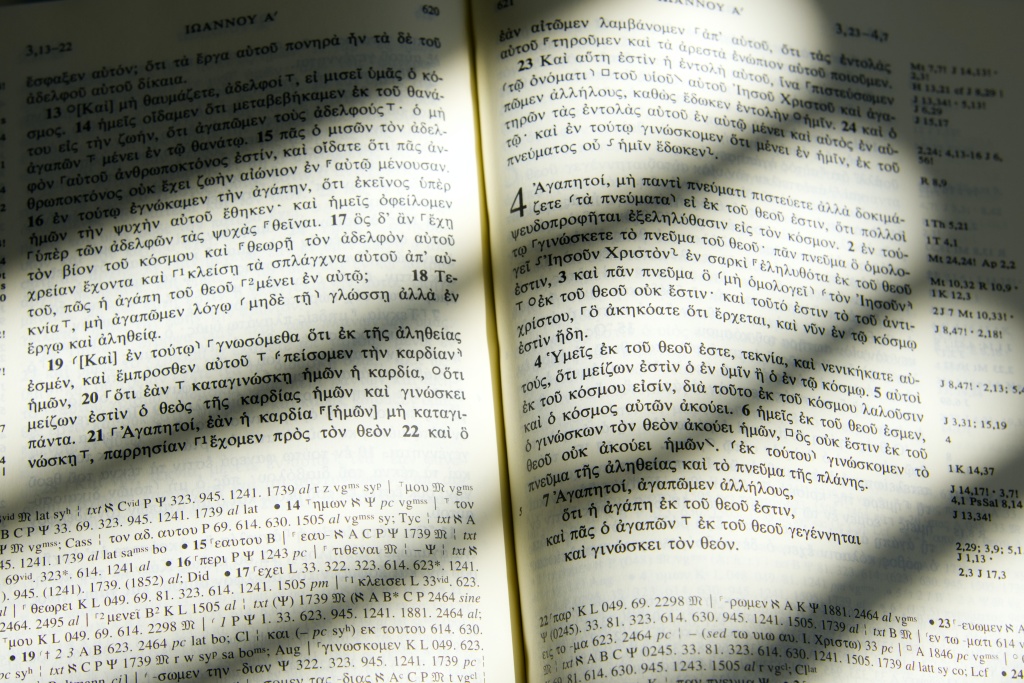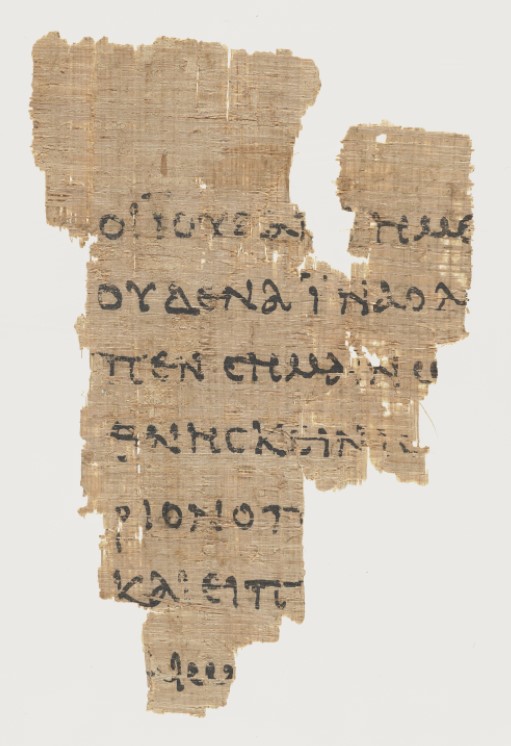
One way of dealing with the claim that the Injil (the New Testament) has been changed or corrupted is to present the huge amount of manuscript evidence that exists, and on which our modern translations are based.
In presenting this argument, it is important to admit two important facts. First, it is true that we don’t have the original autographs (copies) for the books of the New Testament and second, between the many thousands of manuscripts that do exist, there are many differences. Despite this, we can be certain that we have an accurate representation of the text in our modern New Testaments.
In terms of not having the original copies of the books of the New testament, there are good reasons for this. One key reason is that the New Testament was written on papyrus which only lasts around 100 years before disintegrating. Another factor which has led to the original documents being lost is that manuscripts were often destroyed during times of Roman persecution against Christians.1
However, despite this there is overwhelming manuscript evidence dating back as early as the 2nd Century and is suggested that manuscripts known to be dated within the second century contain 43% of the New testament2. The earliest known piece of the New Testament is known as Papyrus P52 (pictured below). It is a fragment of papyrus that dates to some sources to as early as mid-second century (125–175 CE) and contains words from John 18:34-383.

In total we have over 2800 Greek manuscripts of the New Testament, along with around 2400 lectionaries, which were sections of the Greek text arranged for liturgical use by church for certain times throughout the year. In total there are around 5500 Greek manuscripts4 which total an astounding 2.6 million pages of biblical text5. Along with these there are tens of thousands of translations of the Greek text into other languages such as Latin, Coptic, Syriac, Armenian, Georgian and Gothic.
It is important to note that among these documents, which span many hundreds of years, there are many variations. However, the vast majority of these are either variations of spelling, word order (which, as Greek is an ‘infected language’, does not affect meaning as it might in English ), or obvious copy errors that don’t make sense to the reading and can be easily identified when comparing the text to other instances of the same text. Even where there are variations that do give viable alternative readings (around 1% of variations), there are no differences that affect the core teaching of the New Testament.
In addition to these manuscripts the New Testament was frequently quoted by a group of teachers known as the Church Fathers. These lived from the time of the Apostles up until the 4th Century AD, and wrote confirming and defending the Gospel from false teachers. In their writings they quoted the New Testament many thousands of times. In fact, Daniel Wallace, a NT scholar, claims there are well over 1,000,000 New Testament quotations in the writings of the Church Fathers6, and although the claim that the New Testament can be reconstructed in its entirety apart from 11 verses7 is actually a myth, Wallace concludes that “virtually the entire New Testament in the writings of the Church Fathers is multiplied many times over”9. Even though the popular “all but 11 verses” claim is not accurate8, certainly all the key truths of the Gospel, including the identity, death and resurrection of Christ, are affirmed countless times from the 1st Century. One survey of pre-Nicene writings (i.e. before 325 AD) show that the church fathers quoted two thirds of the NT, including 86% of the Gospels and 96% of John’s Gospel10.
Many Muslims will focus on the variations among the Greek manuscripts while claiming that the Quran is 100% unchanged.
Firstly, it is important to understand that while there are many variations among New Testament manuscripts, these differences, including spelling differences and word order variations, do not actually affect the meaning of the text. (Interestingly word order does not change the meaning in Greek as it does in English.) Even where differences are more substantial, there are no variations that affect any doctrine of the New Testament.
Secondly, it is worth highlighting the fact that when it comes to the Quran, there are no original copies of the Quran from the 7th Century, and when comparing the earliest copies of the Quran that do exist, there are many thousands of textual variations among them11. It is also evident that many of these differences have been corrected in recent years. While many Muslims are taught that there is a single Arabic Quran text, there are in fact as many as 30 different Arabic texts that are used around the world, due to the fact that the original Arabic text did not include vowels (similar to Hebrew)12. In order to know how the text should be recited, different traditions of vowelisation developed. See Is the Quran Reliable for more information on how to address these topics with your Muslim friends.
It is a wonderful thing to know how God was at work to preserve the text of the New Testament, and while it is important not to get too side-tracked into what can be a tricky topic, take some time to dig down into the resources below and understand the process by which the New Testament has been preserved for us. Try to bring the conversation back not just to the reliability of scripture, but the trustworthiness of the Lord Jesus who is the same yesterday, today and forever.